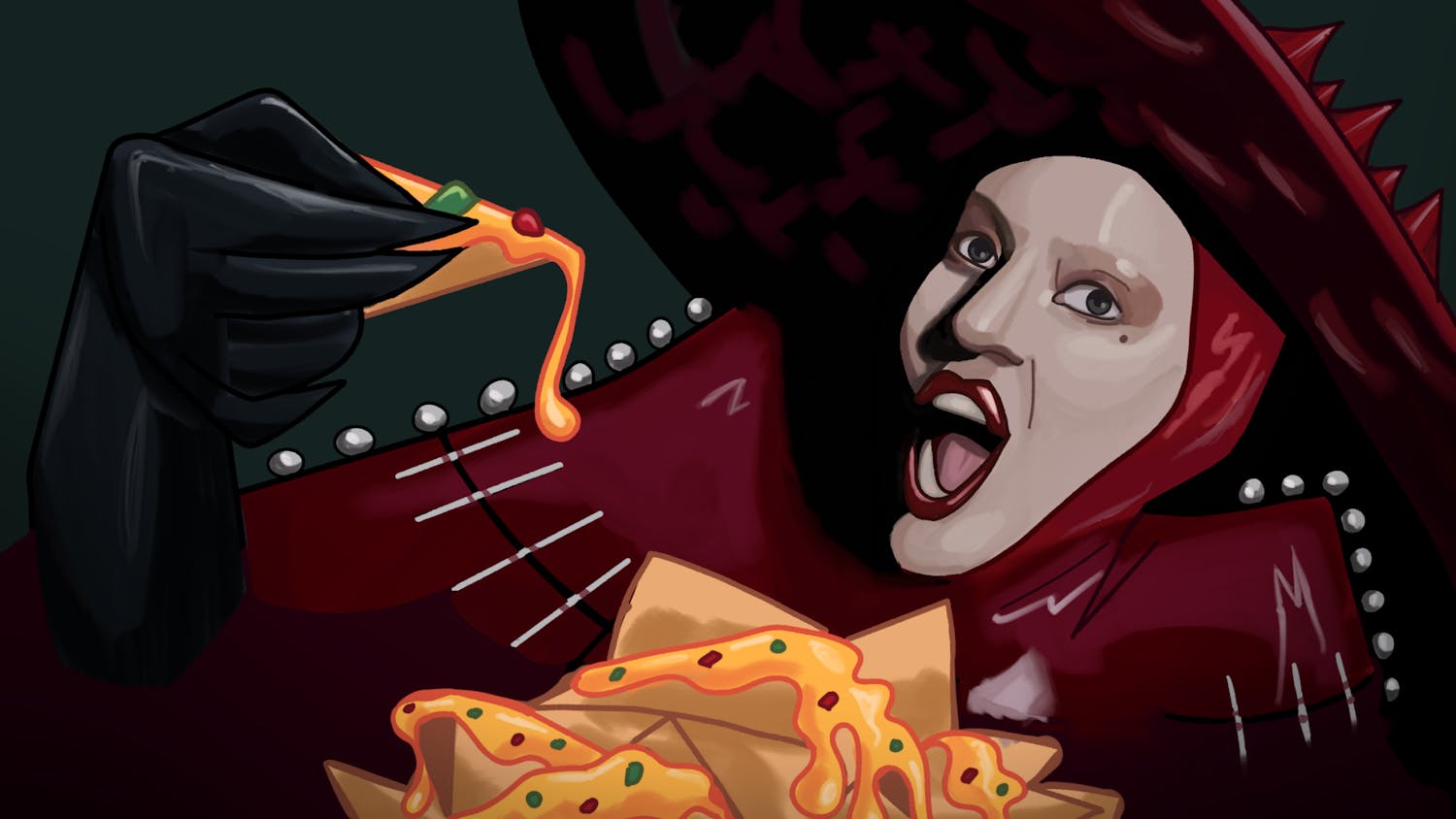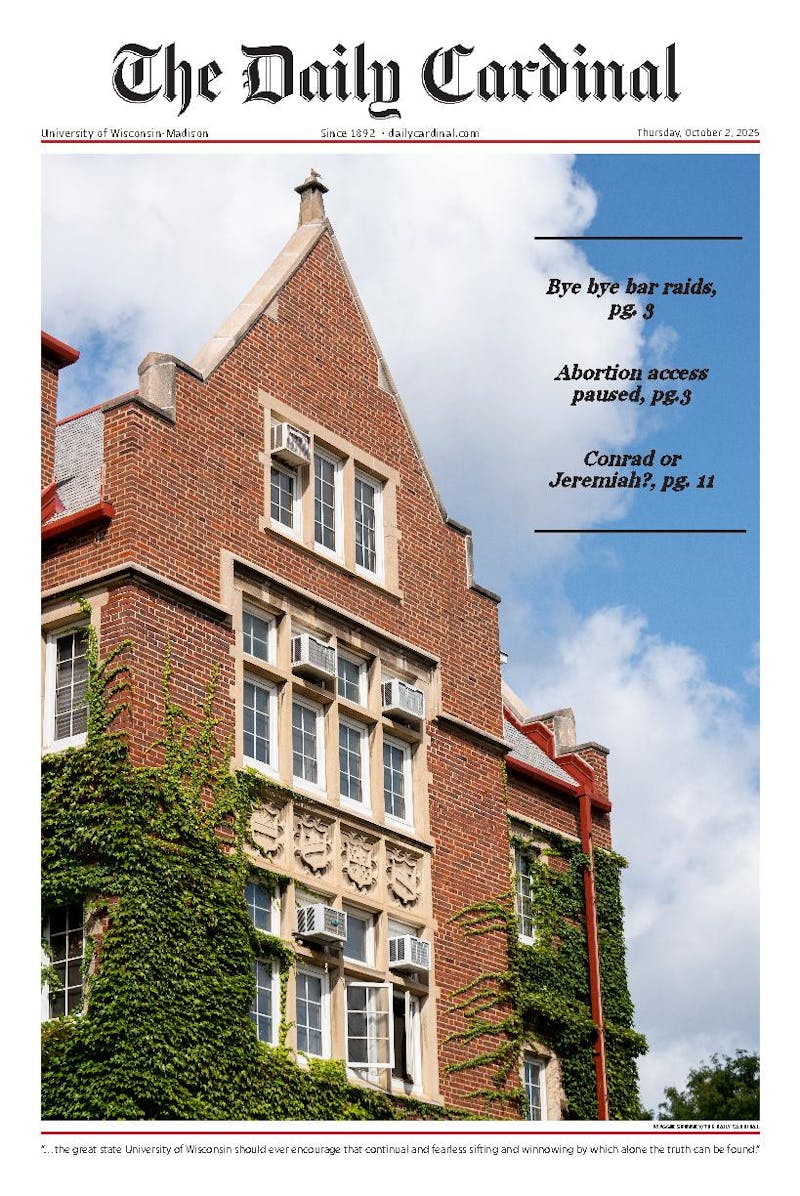The UW Symphony Orchestra performed a most impressive and exciting concert this past Friday night with an extremely varied program that featured winners of the UW School of Music’s Concerto and Composition Competitions. Conductor David Grandis began the program by leading the orchestra through an energetic rendition of Rimsky-Korsakov’s “Capriccio Espagnol.” The exotic sounds of the orchestra’s strings were nicely complimented by blazing brass fanfares and heartfelt woodwind passages, in addition to several intermittent, passionate violin solos by the Concertmaster Ben Seeger.
After the lively finale of Rimsky-Korsakov’s fan favorite, conductor Jim Smith took the podium and dove into an Aria from Giuseppe Verdi’s “La Forza del destino,” featuring soprano vocalist Shannon Prickett. The Aria, “Pace, pace mio Dio,” is taken from the final act of one of Verdi’s later operas. In it, one of the main characters, Donna Leonora, prays to God that she will find peace in her death, as she has just been stabbed in the heart by her dying brother. Prickett wonderfully portrayed the depth of emotion present in the final aria’s music. Through her careful attention to phrasing and her sensitivity to the correlation of the text and the mood of the music, she conveyed Donna Anna’s desire to be saved very effectively.
Prickett left the stage after the final climax of the Verdi aria. The orchestra then slowly crept into the next piece on the program: “Whispering Seraphim,” written by student composer Joshua Hintze. This contemporary work had an interesting concept behind its inception.
“In it, melody has been consumed and nearly destroyed by harmony and relentless rhythm,” said Hintze. “All remnants of melody have been scattered and hidden.”
The final product clearly reflected these ideas, as the music seemed to fall apart with woodwinds floundering in the lower register and the entire orchestra hinted at destruction through sonic stabs.
The final piece on the concert’s first half was the final movement of Joseph Schwantner’s Concerto for Percussion and Orchestra, performed by UW junior Jacob Wolbert. Most of the audience was most likely confused at the outset of the piece, because Wolbert was not on stage when Smith gave the first downbeat. Instead, he began the piece at the back of the hall and walked on stage during the introduction while playing a Shekere (Gord) a non-western, hand-held instrument. The next section featured Wolbert on solo marimba playing quick, arpeggiated passages, often being doubled by other keyboard percussion instruments in the back of the orchestra. The final section of the piece featured Wolbert on a set of tenor drums. A climactic end soon followed after Wolbert performed an impressive, mostly improvised cadenza.
The second half of the concert began with Philip Bergman performing Robert Schumann’s “Cello Concerto in A minor.” The piece, written in three movements and performed without pauses, gives the soloist many opportunities to showcase their technical prowess and expressive musicality. Bergman gave a stellar performance, showcasing astounding emotional depth in lyrical passages, while effortlessly displaying his control of the fingerboard in the upbeat sections of the music. This concerto is also unique due to its inclusion of an accompanied cadenza at the end of the third movement, which led both soloist and orchestra into the pleasant, lively coda, finishing the piece.
Senior violinist Nathaniel Wolkstein then took the stage to perform the first movement of Camille Saint-Saëns’ Concerto for Violin No. 3. This flashy piece for the concert violinist was wonderfully performed by Wolkstein, whose impeccable technique and musical sensitivity shined in the solo passages. The rhythmically interesting first theme contrasted with the extremely lyrical second theme allowed for both Wolkstein and the orchestra to create a wide range of musical textures and moods.
The final soloist to take the stage, Yusuke Komura, closed the program with a fantastic performance of Edvard Grieg’s famous “Piano Concerto in A minor.” From the opening of the arpeggiated motive, Komura had the audience hooked with his sensitivity to the music’s lyricism, which was further reflected in his reactions to the different colors being created by the orchestra. To supplement the impressiveness of the performance, the virtuosic cadenza in the middle of the movement displayed Komura’s depth of emotional expression combined with a full command of the keyboard.
As Komura and the orchestra played the final notes of the concerto, Mills Concert Hall erupted in applause and a standing ovation, giving praise not just to Komura, but to all of the soloists and composers featured throughout the night, who all served as fantastic examples of the UW School of Music’s members.





